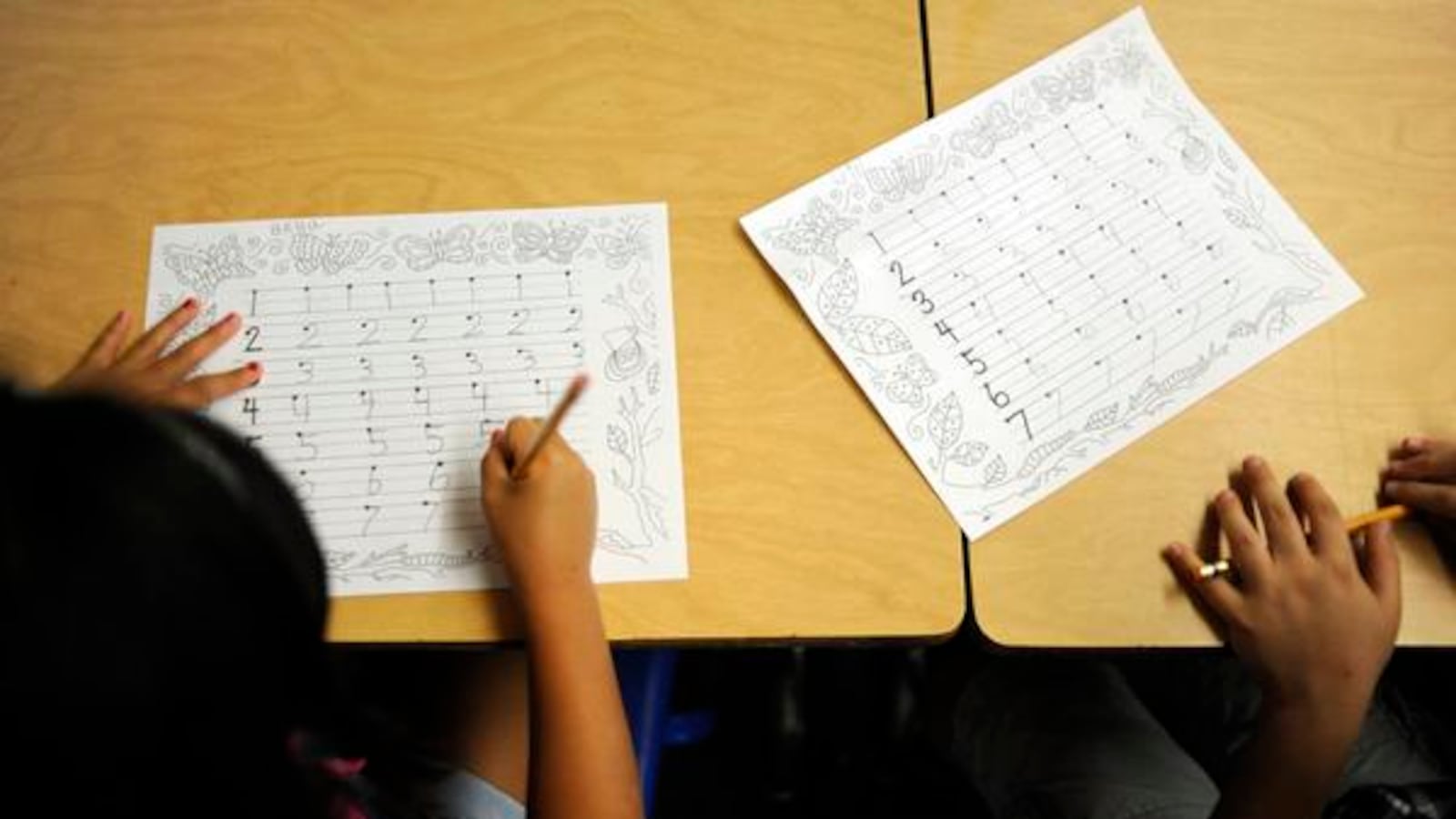Starting this fall, Denver Public Schools will use three criteria to decide whether to shutter low-performing schools, according to guidelines unveiled at a meeting Thursday.
The guidelines are for a policy called the School Performance Compact that was passed by the school board in December. It calls for the district to establish a process for designating persistently struggling schools for closure, replacement or restart.
The criteria explain how DPS will do that.
First, the district will consider how a school ranks on its color-coded rating system.
The system, called the School Performance Framework, takes several factors into account, including how students score on tests and whether they show academic growth year to year.
Each school is graded with a percentage of points — such as 80 percent out of 100 — and a color: blue, green, yellow, orange or red. The most struggling schools are coded red.
Using three years’ worth of ratings — or two years, if three aren’t available — the district will rank the schools from highest to lowest. Schools that rank in the bottom 5 percent will be flagged.
Those schools will then face the second criteria: whether their most recent test scores show an adequate amount of academic growth. If they do, the schools will be safe from closure.
If they don’t, the schools will undergo a school quality review. A team of DPS employees, community members, charter school representatives and staff from a third-party vendor hired to review a school will visit and speak with faculty, students and parents.
If the review team determines the school is on the right track, the school is safe. If not, the district could recommend closing or restarting it. The school board makes the final decision.
The criteria are meant to be as objective as possible and the process was designed to give schools several chances to show improvement, district officials said.
“We want to reward schools that are moving kids as much as possible toward proficiency,” said Grant Guyer, executive director of DPS’s department of accountability, research and evaluation.
Still, board members acknowledged the seriousness of the consequences for those that don’t.
“It’s a very real set of criteria we’re going to be facing in our neighborhoods,” said member Rosemary Rodriguez, who represents southwest Denver.
Schools are expected to get their next School Performance Framework ratings in September based on test scores and other factors from the 2014-15 and 2015-16 school years. Taking those ratings into account, the district will determine which schools meet the first two criteria.
School quality reviews are set to happen in October. The district is scheduled to make its first batch of closure or restart recommendations in November or December.
The seven-member board — including new member Rachele Espiritu, who was sworn in Thursday — will likely vote shortly thereafter.
Some schools will be exempt. Alternative schools, early childhood education centers and new schools won’t be subject to closure or restart under the policy.
Neither will schools in the midst of significant interventions, such as replacing most of the staff or changing the school model. The idea, district officials said, is to give the changes a chance to take root and make a difference before making any drastic decisions.
The district released a list of schools Thursday that shows which will be exempt this fall, including Noel Community Arts School, Manual High and Cheltenham Elementary.
A group of adults and children showed up at Thursday’s board meeting wearing the red T-shirts of Padres & Jovenes Unidos, a Denver-based parent and student advocacy group. The adults listened to district staff explain the criteria, some of them with the help of a Spanish translator, while the children played quietly with cell phones and stuffed animals.
Afterward, parent Marina Guerrero said she’s glad Cheltenham will get a reprieve. She has three children at the school.
“We need more time to see changes happening,” she said.
The district’s list also shows which schools currently rank in the bottom 5 percent. However, it’s not an accurate picture of the schools that may face closure because it doesn’t include the School Performance Framework ratings that will be released in September.
But it does indicate which schools could be in danger, including Greenlee Elementary, Amesse Elementary and Lake International School.
The district has encouraged 19 schools rated red or orange to talk to their communities this month or before school starts in August about the closure policy.
Correction: A previous version of this story said Centennial Elementary was among the schools that could be in danger this fall. Centennial won’t be subject to the policy until 2017. Denver Public Schools originally included Centennial on a list of schools that could face the policy this fall, but the district now says that was an error.

